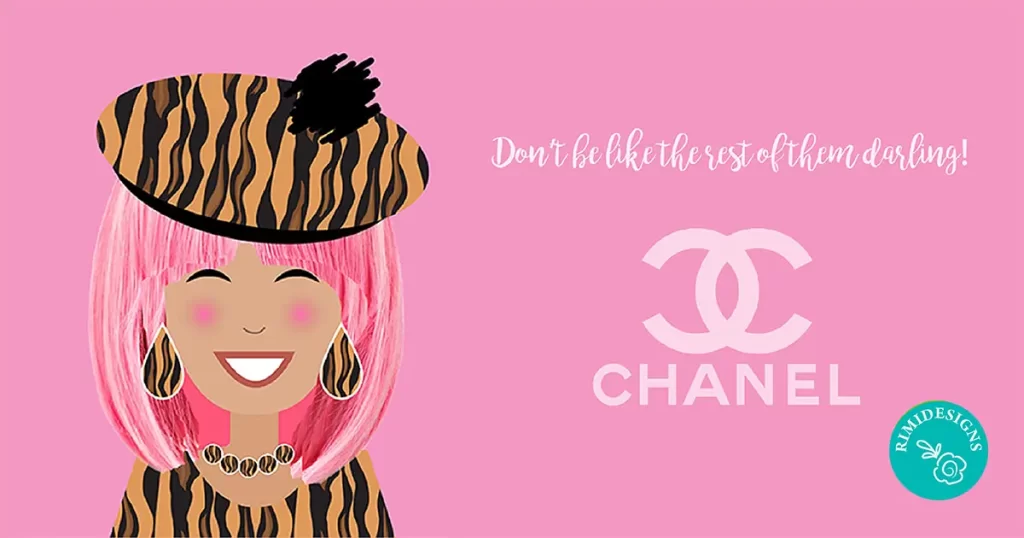
How to Create Visuals for a Luxury Brand
Creating visuals for a luxury brand is a meticulous process that involves a thoughtful blend of aesthetics, exclusivity and storytelling. From colour choices to typography, every element plays a crucial role in conveying the brand’s essence.
Here’s a step-by-step guide on how to create visuals for a luxury brand.
1. Understand the brand
Begin by gaining a deep understanding of the visual brand. Uncover its core values, personality, unique selling points and the emotions it aims to evoke. This foundational knowledge will guide every visual decision.
2. Define the target audience
Identify and profile the target audience. Understand their aspirations, lifestyle and the visual language that resonates with them. Luxury visuals should speak directly to the desires and tastes of the intended consumers.
3. Storytelling through visuals
Craft a cohesive visual narrative that communicates the brand’s personality through its story and heritage. This includes the creation of a distinct colour palette, typography choices and other design elements that will become synonymous with the brand. Showcase craftsmanship, attention to detail and the unique aspects of the product or service.
4. Choose a luxurious colour palette
Select a colour palette that exudes sophistication. The chosen colours should evoke the desired emotions and align with the brand’s narrative.
Neutral tones
Use neutral tones such as ivory, beige, taupe and greys as a foundation. These colours evoke sophistication and timelessness.
Deep, rich colours
Introduce deep, rich hues like burgundy, deep navy, emerald green or royal purple. These colours convey opulence and add a touch of luxury.
Metallic accents
Incorporate metallic accents like gold, silver or bronze. These colours are associated with wealth and can elevate the brand’s visual appeal.
Monochromatic schemes
Experiment with monochromatic colour schemes, focusing on variations of a single colour. This creates a sense of harmony and elegance.
Subdued pastels
If using pastels, opt for muted and subdued tones rather than bright, bold pastels. Soft blush, dusty rose or muted lavender can add a subtle touch of luxury.
Contrast
Create contrast between elements to add visual interest. Pairing light and dark shades or combining warm and cool tones can be effective.
5. Typography for elegance
Opt for elegant and timeless fonts that reflect the brand’s personality. Typography should be easy to read, while maintaining an air of exclusivity.
Serif fonts
Choose serif fonts for a classic and refined look. Timeless typefaces like Garamond, Baskerville or Didot can convey a sense of tradition and luxury.
Thin and elegant strokes
Opt for fonts with thin and graceful strokes. Thin lines exude sophistication and a modern touch.
Letter spacing and kerning
Pay attention to letter spacing and kerning. Slightly increased spacing between letters can enhance readability and add a sense of luxury.
Avoid οrnate fonts
While serif fonts are encouraged, avoid overly ornate or intricate fonts. Aim for a balance between elegance and readability.
Limited font selection
Stick to a limited selection of fonts (preferably one or two) to maintain a cohesive brand identity. Consistency in typography is crucial.
Custom typography
Consider investing in custom typography that is unique to the brand. This adds an exclusive touch and reinforces the brand’s identity.
Hierarchy and emphasis
Establish a clear hierarchy with different font weights and sizes for headings, subheadings and body text. This helps guide the viewer’s attention.
Versatility
Make sure that the chosen fonts are versatile enough to be used across various platforms, from digital to print.
6. Logo and branding elements
Make sure the logo is sleek, memorable and aligns with the brand’s identity. Use branding elements sparingly to maintain a sense of exclusivity.
7. Photography and imagery
Invest in high-quality, high-resolution images that capture the essence of the brand. Embrace clean and minimalist compositions, ensuring that each image communicates the luxury, craftsmanship and attention to detail associated with the brand. Consider incorporating lifestyle shots that evoke the desired emotions.
8. Quality over quantity
Avoid clutter and excess. Less is often more in the luxury sector. Emphasise the quality of visuals rather than overwhelming with quantity.
9. Exclusive packaging design
Extend the luxury experience to packaging by incorporating custom illustrations or embossed logos. Consider adding personalised touches for a premium feel. The packaging should reflect the brand’s identity and make the unboxing experience as special as the product itself.
10. In-store experience
Ensure that the in-store ambiance aligns with the brand’s image. Use subtle and sophisticated displays to showcase products.
11. Digital presence
Invest in a well-designed, user-friendly website that reflects the brand’s aesthetics. Leverage social media platforms with carefully curated content that aligns with the luxury image.
12. Digital innovation
Embrace digital tools and technologies to enhance the brand’s visual presence. Consider interactive elements, digital illustrations and augmented reality to create a modern and engaging brand experience.
13. Consistency across platforms
Maintain a consistent visual language across all brand touchpoints, from the website to social media and physical stores. Consistency builds brand recognition and reinforces the luxury image.
14. Collaborations and limited editions
Collaborate with renowned artists or designers to create exclusive collections. Limited editions create a sense of scarcity and desirability.
15. Feedback and iteration
Gather feedback from the target audience, analyse the effectiveness of visuals and be willing to make iterative improvements. Stay attuned to evolving design trends, while maintaining the brand’s essence. The goal is to continuously refine and enhance the visual identity of the luxury brand.
Conclusion
In essence, creating visuals for a luxury brand is an art form that requires a deep understanding of the brand’s essence, a keen sense of aesthetics and a commitment to delivering a visually compelling and unforgettable experience for the audience.



